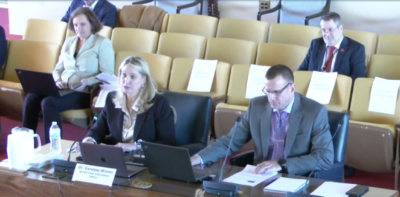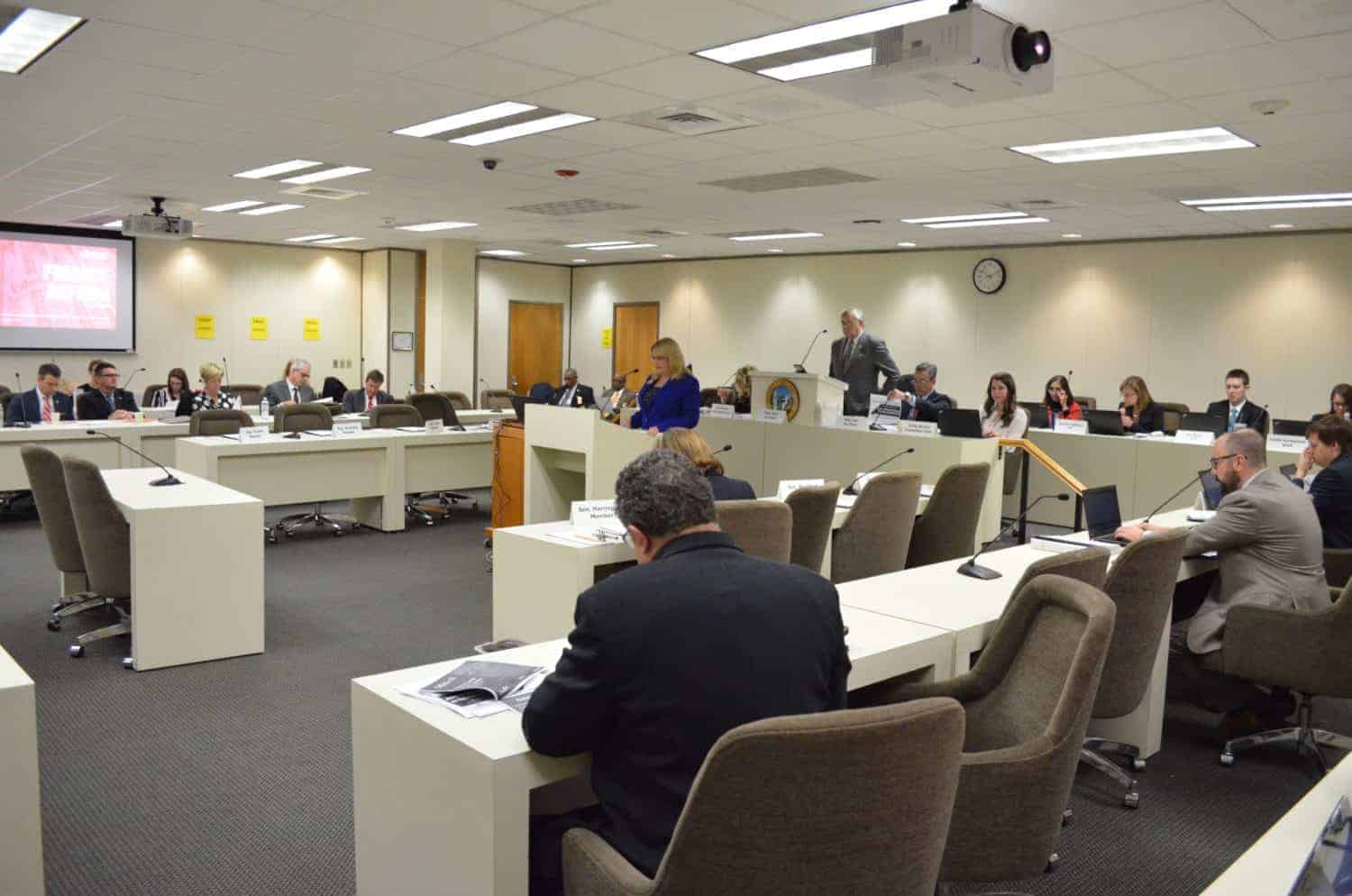Local and state education leaders lobbied Wednesday the Joint Legislative Task Force on Education Finance Reform for more flexibility on how they use state funds.
The task force heard from superintendents, district finance officers, and the leaders of two state education organizations as it continues to gather information about how to change or strengthen the way the state funds education. Presenter after presenter got up and said that an important part of any funding system would be funding flexibility. Members of the task force, like Sen. Jerry Tillman, R-Randolph and Rep. Hugh Blackwell, R-Burke, even got in on the chorus.
“I’m perfectly willing to give you (flexibility) because you superintendents know more about where that should go than anybody alive,” Tillman said.
“I would like to say amen to the sermon delivered by Senator Tillman,” Blackwell added. “I think flexibility is clearly the way to go.”
The presentations heard by the task force included what districts and groups liked and disliked about the current funding formula. The issues being tackled date back to committee meetings last year that explored the problems with the current allotment system of funding distribution and suggested a new funding system was possibly needed. The challenges were the focus of a study by the General Assembly’s Program Evaluation Division (PED).
Presently, the state doles out funds using a series of allotments — 37 in total. The allotments are essentially line items designating a specific amount for classroom teachers, an amount for school building administration, etc. This is called the Resource Allocation Model.
One of the task force’s charges is to explore the possibility of instead using a weighted-student formula in North Carolina.
In this formula, rather than using a series of allotments, the money given to schools would be based on the student. The state would allocate a base amount of money for each student in the state. Schools are funded based on the number of students. Typical students receive the base, and extra money is allotted depending on any extra needs or situations students might have.
When the issue of flexibility initially came up Wednesday, it sparked a discussion among the lawmakers. Stephen Fisher, superintendent of Cleveland County Schools, was the first to mention the importance of flexibility.
“Where we don’t have flexibility it creates hardships to meet the needs that we have,” he said.
Rep. Frank Iler, R-Brunswick, worried about the unintentional consequences of giving localities more spending flexibility. He said he was generally for flexibility, but that moving money to one area means taking it from another.
“When you enhance one area are you going to deprive another area?,” he asked.
“I think that’s a very fair question and I would agree that’s a danger,” Fisher responded.
Tillman said that districts did have much more flexibility about five years ago but said that districts took most of the money they were given and used it on teachers. Then they “cried” that they didn’t have enough money for teacher assistants. The General Assembly has since limited some of districts’ flexibility. He said that with more flexibility comes more responsibility.
“The onus is on your back if you’ve got flexibility,” he told Fisher.
One way in which the General Assembly limited district flexibility happened in 2015. That year, the Senate sought to cut funding for teacher assistants across the state. There was an uproar over the plan, and ultimately, the cuts were not made. However, while the final budget bill included the funds for TAs, it also included a provision saying that money given to districts for TAs had to be used on TAs, eliminating the flexibility that districts once had with those funds.
Multiple presenters agreed that district leaders would have to accept the responsibility for their decisions if they received more flexibility.
There were a litany of other items that multiple districts mentioned both positively and negatively Tuesday.
Multiple district leaders mentioned that they liked position allotments and want those to remain in any new funding system. Position allotments are basically dollars given for specific positions, like teachers or teacher assistants.
Additionally, again and again, the task force heard that districts:
- Want money for charter schools to go directly to charters and not flow through the district school system
- Don’t like the caps on funding in certain allotments such as children with disability or limited English proficiency student allotments
- Think there are too many revisions made to the allotments during the school year, meaning that state funding may change for certain items during the year making it hard for districts to budget accurately
Multiple district leaders also mentioned that they thought it was important that the task force consider the adequacy of state spending levels on education. That is something the chairs of the task force have explicitly said lawmakers won’t be discussing.
The North Carolina Association of School Administrators (NCASA) and the North Carolina School Boards Administration (NCSBA) both had representatives present to the task force Wednesday as well.
NCASA provided a lengthy report that examined the use of weighted-student formulas in six states and presented key lessons, including that policy decisions by a state can make a weighted-student formula inadequate, inequitable, or overly complicated, all charges leveled at North Carolina’s current allotment system.
NCASA’s report also says that no state has implemented a “clean” version of a weighted-student formula. Part of the appeal of this formula is that it may be more simple than what North Carolina currently uses, but NCASA’s report said that it actually ends up being pretty complex in many states that use it.
The report also said that there will be transition costs to moving to a new funding formula. It called the potential benefits of such a transition, “…at best, ambiguous.”
During the NCSBA presentation, Leanne Winner, director of governmental relations for the organization, told the task force that whatever the state decides to do, it should provide a multi-year phase in of the new system, provide enough time in transition for adjustments to be made, and continue to make changes during the transition.
Rep. Craig Horn, R-Union, one of the co-chairs of the task force, said that lawmakers are a long way from making any decisions and are still gathering information.
“We’re not going to accomplish it quickly, nor should we. We must be contemplative to come up with the right decision for North Carolina,” he said.
He said that the task force is interested in hearing from as many “reasonable people with reasonable solutions” as possible.
To see all the presentations and reports from the task force, go here.
Recommended reading




